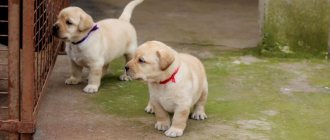The Papillon is a small, beautiful dog with a recognizable appearance. Because of its widely spaced ears, covered with long, hanging hair, the breed was called the “butterfly”. Papillons are cheerful, sociable and intelligent. This is not just a lap dog that will lie on the sofa, but an ideal companion that strives to follow its owner everywhere. This is one of the most popular decorative breeds. But before getting a Papillon, you need to study the description of these dogs, their characteristics, pros and cons, and reviews from owners.
- Head
- Features of education
- Health
History of the origin of the Papillon breed
Since the 14th century, the ancestors of the breed, the Continental Toy Spaniels, were highly valued by members of the elite. The most famous French and Belgian personalities doted on their pets, and one of the kings of France (Henry III) was so unrestrained that he managed to waste a third of public money on purchasing these cheerful fluffies and creating comfortable conditions for them.
By the 17th century, not a single reception or ball was complete without toy spaniels, they posed for artists with all their might, and generally became an official symbol of social life. Some were lucky “in a big way” - they received palaces and gardens from loving owners, where they could roam to their heart’s content.
- “Butterflies” appeared in the States at the end of the 19th century, and in the 20s of the last century they finally became interesting to British breeders.
- The lush fur coat, by the way, appeared in Papillons as a result of experiments in crossing with Spitz dogs.
- This also slightly changed the location of the tip of the tail in the offspring of the experimental pairs - it slightly shifted to the upper line of the back.
The Papillon breed was recognized by world experts only in the forties.
Key points in training
Papillons are one of the most intelligent breeds and are easy to train and suitable for beginners. But often such spaniels try to dominate and show character, so the owner should show the puppy who is boss in the house. This can be done without brute force or punishment, for example, the main method is feeding after all family members and prohibiting free movement on furniture. The dog must know its place in the house and in the family hierarchy, respecting all members of the household.
Read about how to properly train a dog in the article: “Training a puppy: effective methods from dog handlers, learning commands at home.”
Continental Toy Spaniel puppies are smart and curious, so they quickly learn names and commands. They also sense the owner’s mood and try not to upset him. From 4 months, when the dog already knows the daily routine and nickname well, you can learn the commands “Near”, “Place”, “Sit”, “No” . Papillons show good results in agility (obstacle course).
Color standards
Any color is acceptable, the main thing is that it is dominated by white paws and body. The most common colors are:
- White-sable (with muted or bright red sable shades);
- Black and white;
- Three-colored - classic (with a combination of black, white and small red tan markings near the eyes, ears and on the cheeks) and hound (a significant amount of red hair).
There may be white markings on the head.
Types of purchase
There are different options for purchasing Papillons. For example, depending on the age category, you can purchase the following puppy:
- 2-2.5 months.
- 2.5-3 months.
- 3.5-4 months.
- 4.5-5 months.
- Six months old.
The price is higher for 2 month old puppies. As they get older, the cost decreases.
Depending on the type of coat, you can buy the following puppy:
- Short-haired.
- Long-haired.
- With a coat of medium length.
Long-haired individuals are more expensive.
Depending on the color, you can buy the following Papillon:
- Black and white.
- White and red.
- Tricolor.
- Black and sable.
- Lemon-sable.
- White-lemon.
- Snow White.
Dogs of lemon-sable, white-lemon, black-sable colors are more valued by breeders. Therefore, these suits have a higher price.
Depending on the purebred, the following Papillons are distinguished:
- Show class (fully comply with standards, suitable for participation in exhibitions).
- Breed class (have some deviations in appearance, suitable for breeding).
- Pet class (they are a cross between different breeds and are suitable as pets).
Show-class puppies are most valued, and pet-class puppies are least valued.
Types of local purchases:
- From a professional breeder.
- In the nursery.
- According to the advertisement.
- At the pet market.
Defects
Any non-compliance with the standard in the description of the Papillon is considered a defect. Too flat/convex skull, weak pigmentation of the nasal lobe, tongue protruding outside the mouth, lack of a correct, tight bite, unnatural coat, dip or hump on the lower back, clubfoot, presence of dewclaws.
These are just the most common defects. As already mentioned, European experts are especially picky, not allowing a single deviation from the prescribed standard.
Feeding the Papillon
What to feed your Papillon
- a dog of royal blood? Here, every Papillon owner is free to choose for himself. Just a few tips. Firstly, the dog must be accustomed to the feeding area from infancy. Secondly, no matter how much you would like to pamper a puppy or an adult dog, Papillons should not be given sweets, chocolate, or various spices. Remember that, despite the size and character, you still have a predator. The dog should be given meat, but you should not treat your pet with boiled bones, because of this, the Papillon's intestines may become clogged.
Whether to feed your pet dry food is entirely your choice. Be sure to consult your veterinarian before giving this or that food to your butterfly dog. Your pet’s diet must contain vitamins (the set will be given to you by the breeder from whom you are adopting a Papillon puppy), proteins and carbohydrates and fats, which will contribute to the full and proper development of the dog. Your pet should consume only fresh, natural foods.
During puppyhood, the dog needs to be fed 5-6 times a day, gradually reducing the number of feedings. By 8 months Papillon puppies
should be transferred to 2 meals a day. As with all dogs, water should be available around the clock. If you decide to get a Papillon puppy, know that you have made an excellent royal choice.
This dog will be your reliable friend, faithful companion, and play partner with children. The Papillon will delight you on a walk with its chic appearance and perky disposition. A small-looking dog can protect its owner from an intruder and even guard the house. This dog can be kept in an apartment; dogs of this breed are distinguished by good health.
But remember that we are responsible for those we have tamed. This also applies to a large extent to the Papillon dog.
. Dogs of this breed cannot stand being alone. Having got such a dog, you will simply have to give it a sufficient share of your attention so that the pet does not feel abandoned.
SIBERIAN HUSKY: HISTORY OF THE BREED AND CHARACTER OF THE DOG
WHAT IS THE DIFFERENCE OF THE EASTERN EUROPEAN SHEPHERD DOG FROM THE GERMAN SHEPHERD?
GERMAN SPITCH: HISTORY OF ORIGIN OF THE SPECIES AND CHARACTER OF THE DOG
HOW TO TRANSPORT A DOG IN A CAR: 8 TIPS TO FOLLOW
Character
The Papillon dog is an optimist, a bundle of positivity. If the dog is in a bad mood, it is a cause for concern for the owner. Rose-colored glasses are “built-in” into these brilliant eyes, they are interested in everything, on the street it is a research “tornado”.
- Daddies only dislike rudeness and aggression - such behavior of the owner can cause serious harm to the pet’s psyche and its emotional state.
- In general, dogs are not capricious, easily adapt to any environment, and are loyal to children.
- A properly raised individual will not make trouble over trifles, quarrel with strangers, or destroy a house when left alone.
The dog could use a friend or another pet, but the dimensions should be taken into account. Dogs that are too large may be viewed with caution.
Exterior description
Translated from French, “papillon” means “butterfly”. Experts have differing opinions regarding the origin of such creatures. There is a version that the Papillon is a descendant of dwarf spaniels.
Description of the animal's appearance:
- Height – up to 27-28 cm.
- Weight – 2.5-5.5 kg.
- The head is proportional.
- The nose is straight.
- The muzzle is pointed.
- The forehead is moderately convex.
- The lips are thin, pigmented, and fit tightly to the jaws.
- Scissor bite, correct.
- The nose is rounded, small, with open nostrils.
- The eyes are almond-shaped, shiny, not protruding, brown with a blue tint.
- The ears are large, set wide apart, with rounded ends, in an erect position and completely covered with hair.
- The body is rectangular, elongated.
- The back is muscular, shortened.
- The neck is short.
- The chest is wide.
- Paws are straight and wide, with elongated shoulder blades.
- The tail is straight, set high, bent at the end, but not curled into a ring, and covered with long hair.
By nature, representatives of this breed are cheerful, devoted, active, and do not like loneliness. On average, Papillons live 12-16 years .
Features of education and training
Many people think that Papillons are soft-bodied dogs and easy to manage. However, these dogs have a lively and sharp mind - they never refuse to acquire new knowledge, they easily remember not only commands, but also the most frequently used phrases and words by their owner.
With its external fragility and defenselessness, the Papillon can be confusing, but when raising it, you should observe moderate severity, give commands in a serious tone, but not get carried away with punishments, and use dog treats during the training process.
When starting a Papillon, you should purchase several required attributes:
- A bed and a couple of mattresses for it;
- A couple of metal or ceramic bowls;
- Comb (to comb out wool);
- Several latex toys;
- Leather collar (soft);
- Leash with tape measure.
It is not recommended to use a harness, as this can lead to eversion of bones (in puppies in particular). The duration of walks should be at least half an hour, twice a day.
The bed should not be placed in a draft or near heating appliances. In addition, the pet should have a view of as much space as possible.
Papillon puppies are just like all babies, they try everything with their teeth. So you should be prepared for damaged shoes, wires and other delights. This will pass with age.
Breed traits
Breed traits (on a 5-point scale)
| Papillon | |||
| Activity | in the house | 1.8 | |
| on the street | 2.7 | ||
| Obedience | training | 4.5 | |
| strangers | 3 | ||
| Domination | in family | 1.5 | |
| over dogs | 1 | ||
| Defending your territory | from people | 1 | |
| from dogs | 1 | ||
| Sociability | in family | 5 | |
| with strangers | 3 | ||
| with dogs | 3 | ||
| Concentration | in family | 1 | |
| in front of strangers | 3 | ||
| with dogs | 2 | ||
| Aggressiveness | in family | 2.5 | |
| to strangers | 3.8 | ||
| to the dogs | 3 | ||
| to cats | 2 | ||
| Family behavior | calmness | 4.8 | |
| demand for affection | 5 | ||
| excitability | 2.6 | ||
| playfulness | 3 | ||
| excessive barking | 2 | ||
| behavioral breakdowns | 1.8 | ||
| Tolerance for children | up to 4 years | 4.7 | |
| over 4 years old | 4.8 | ||
| Institutional use | watchman | 1.2 | |
| bodyguard | 1 | ||
This breed is often compared to the following dog breeds: Pomeranian, Chihuahua, Cavalier King Charles Spaniel, Yorkshire Terrier, Jack Russell Terrier.
The photo shows what a Papillon dog looks like:
About hygiene
You need to brush your dog every day, for a few minutes. Just not “dry”, so as not to break the hair, but first moisten the wool with water or conditioner.
Due to the practically absent undercoat, individuals do not shed too vigorously. It is better to entrust the Papillon haircut to a professional groomer.
- Bathing is necessary as soon as the dog gets dirty, after which the coat must be dried with a hairdryer. Otherwise, the hairs will curl and become difficult to comb. You can also trim the nails after bathing while they are soft. But if the dog walks for a long time, then such a procedure may not be necessary.
- The coat will be cleaner for a longer time if you walk your Papillon in a protective overall. However, due to the dog’s neatness, after a walk most often only washing its paws is required.
- Brushing your teeth cannot be done with regular toothpaste - only with a special product for dogs. Special chips will help avoid the formation of tartar.
- The eyes are wiped with chamomile infusion, moistening a cotton pad in it, and the ears are wiped with a disinfectant gel applied to a soft rag or cotton swab.
Toilet training is taught patiently and consistently, with the help of laid out diapers. Their quantity should be gradually reduced; you can put a small used piece in your home toilet. There is no need to scold for a puddle on the carpet - you should take the dog to the toilet.
Papillon at home
Before you bring a small pet into your home, you should be well prepared.
What the owner must provide for the puppy:
- treatment;
- proper nutrition;
- a place to relax (and toys);
- toilet;
- walks;
- hygiene care:
- education.
Treatment
In order to avoid having to treat your pet for illnesses, the owner of the baby is obliged to get all the dog’s vaccinations in a timely manner. To do this, you need to get a veterinary passport, where the dates of vaccinations will be entered.
Several times a year it is necessary to rid your pet of fleas and parasites (this is also noted in the passport). In some areas, the problem of piroplasmosis, a disease transmitted by ticks, is especially acute; therefore, special attention should also be paid to the fight against them.
It is better if the pet does not get sick at all, but just in case, you need to have the phone number of your veterinarian, as well as 24-hour veterinary clinics.
Food
There should always be clean bowls with food and water. It is necessary to have an adjustable stand to form correct posture (exhibition stand)
The main source of protein is lean meat, pre-scalded, or lightly boiled and chopped. Neither chicken nor minced meat is recommended.
There should also be products with calcium - specially prepared calcined cottage cheese, mixed bone meal, milk powder, chalk, chopped seaweed.
A one-year-old animal should eat twice a day, and up to two months - six times a day. The number of meals is reduced gradually.
Care and maintenance
Caring for a Papillon is no more difficult than caring for any decorative dog. They shed twice a year, so taking care of a clean, beautiful coat is a priority on the list of procedures. To do this, you need to comb the dogs, bathe them in a timely manner and cut their hair (if they are not participating in exhibitions).
Continental Toy Spaniels are suitable for domestic life only. Street maintenance is impossible not only because of its miniature size. This breed does not have an undercoat, so the dogs get cold in winter and can overheat in summer. Such small animals can be kept in an apartment; the Papillon does not need a lot of space. He can adapt to a home toilet, but this will not be a full replacement for walking.
- After changing teeth, you need to brush your incisors every two weeks with a soft brush and special toothpaste. Chewing cords can be used.
- Claws are trimmed with a nail clipper once every 2-3 weeks.
- Eyes and ears are examined daily. Cleaning the ears is not a frequent procedure ( 3-4 times a month), but the eyes should be washed with chamomile decoction every 5-6 days.
- Before buying a puppy, you need to equip the house, purchase the necessary items for daily use: a bed, brushes and combs, hygiene products, toys, bowls on adjustable stands. Usually such miniature dogs sleep with their owners, but it is better not to accustom them to this.
Nutrition
Papillons are small dogs, so feeding them will not be expensive. If the breeder advises feeding the puppy the same thing that he was fed in the kennel, then you should listen. Otherwise, the transition to another food should be smooth.
- Increasingly, dog breeders prefer dry feeding. It is easy to use and contains a complex of essential vitamins and minerals.
- You need to choose holistic (grain-free) super-premium for small, active breeds.
- In case of allergic reactions, you need to subtract the composition and change the product to a hypoallergenic one.
- Typically, an adult Papillon needs 200-300 grams of dry food per day. It needs to be diluted with warm cold water or broth for better absorption.
- With a natural diet, the diet should consist of 50-60% meat and offal. Lean beef, lamb, rabbit and chicken are perfect.
- Another 30% is occupied by porridge cooked in broth or milk. The rest of the menu should be filled with fresh vegetables and fruits, dairy products, boiled boneless sea fish and boiled eggs.
It is strictly forbidden to feed Papillons the following foods:
- Pork;
- Butter;
- Fatty dairy products;
- Bones;
- Fried;
- Floury and sweet;
- Potatoes, melon, grapes, garlic and onions;
- Smoked;
- Nuts and beans.
Feeding mode:
Papillons are quite active, so they need to be fed 2 times a day . In hot weather, the portion size is reduced, but more water is poured, which should always be freely available. Food should be warm and liquid. Puppies are fed more often - 5-6 times a day. From an early age, the puppy is given vitamins prescribed by the veterinarian.
Health
Papillons are long-lived . The average lifespan is 15 years , but some individuals reach 18-20 years . But this breed cannot be called completely healthy. Continental Toy Spaniels are prone to many diseases, some of which are hereditary. Particularly problematic areas are the eyes and nose, respiratory tract and joints.
To avoid diseases or at least not worsen them, you need to properly care for the animal, follow the schedule of vaccinations against infectious diseases and notice any changes in the behavior and well-being of the pet.
Vaccinations
All pets must be vaccinated on schedule. For dogs, there are 2 main vaccinations that must be renewed annually in the same month.
- The first vaccination is usually carried out in the nursery when the puppies reach 1.5-2 months . Then the procedure must be repeated after a few weeks, at 6 months and 12 months . A complex drug is introduced that will protect the puppy from viral diseases and give him immunity.
- The second important vaccination is against rabies . It is carried out at 7 months . Some breeders believe that this vaccination is not necessary if the puppy does not come into contact with unknown animals. But without this vaccination, the dog cannot be taken abroad. In addition, if a pet bites its owner and does not have this vaccination, then problems with medical care may arise (doctors will not hesitate to begin treatment; it is impossible to prove that the pet is healthy).
For vaccination to go well, you need to rid your pet of helminths in advance (two weeks before) using special medications. The dog must be absolutely healthy. Pregnant and lactating females, males after mating and weakened, exhausted pets are not allowed to undergo the procedure.
- The puppy cannot be walked until the second vaccination.
- After each procedure, you must quarantine for 14 days .
- The cost of vaccination varies from 400 to 1000 rubles.
Vaccination does not provide a 100% guarantee that a dog cannot become infected with a viral disease. Therefore, if there is a sharp deterioration in your pet’s well-being, refusal to eat and play, or unpleasant symptoms (vomiting, diarrhea), you must contact the clinic without delay.
Diseases
Like many decorative breeds, the Continental Toy Spaniel is susceptible to some eye diseases, which can be either congenital or acquired:
- Cataract (damage to the lens);
- Entropy or entropion of the eyelid (sometimes solved only by surgery);
- Retinal atrophy (most often occurs in older pets);
- Papillons are prone to excessive tearing, so symptoms of conjunctivitis .
In addition, improper breathing is considered a breed problem: reverse sneezing, coughing, grunting and snoring. These symptoms are not normal and require treatment.
One of the most dangerous hereditary defects is weak ligaments and muscles. Because of this, spaniels are often injured: they suffer dislocations of the kneecaps, ruptures of muscle tissue.
Walk
Papillons are very active dogs.
- Walking should be twice a day and long ( 1-1.5 hours ).
- If your pet has the opportunity to walk freely around the garden, then active walks can be reduced to 40 minutes. In any case, this perpetual motion machine needs to splash out energy.
- Continental Toy Spaniels are not prone to aggressive behavior, but early socialization and familiarity with other pets will help instill in the dog restraint and courtesy in communication.
- These dogs will happily play with dogs and people if they are not angry . Otherwise, Papillon can fend for itself.
You need to walk both on a leash and without it. If the puppy runs away, then you need to scold him and deprive him of treats. Spaniels are smart enough that they will understand that this cannot be done. In hot weather, you should always have drinking water with you for your pet, and in the cold season, put protective overalls on your dog.
Grooming
Toy spaniels are quite clean and do not like dirt both around and on themselves. Therefore, it will not be difficult to accustom your puppy to hygiene procedures.
- Long, thick wool is combed every 2-3 days ; special products can be used to untangle tangles.
- During the shedding period (for males spring and autumn, for females after the birth of puppies), brushing should be done more often.
- Dogs do not have undercoat, so there will be no problems with a large amount of hair on furniture and carpets.
- If the dog does not participate in exhibitions, it is recommended to periodically do a hygienic haircut (between the fingers, genitals, ears and around the anus).
- During the summer, many breeders cut their dogs short.
- Bathing is carried out as soiled, with special shampoos no more than once a month . You can use dry shampoos. After each walk, paws are washed under warm water.
Do not forget about treatment against external and internal parasites (ticks, fleas, helminths). As a rule, it is carried out once every 1-2 months . In order not to get confused about the dates, you can record the drugs in the veterinary passport on special pages.
Health issues
You can often meet quite vigorous 15-year-old Papillons and Phalenes. Most often, the eyes may suffer (from cataracts, corneal dystrophy, entropion), and the kneecap may dislocate due to injury.
Individuals with congenital deafness that cannot be treated are also periodically identified.
Theses
- Although not typical for the breed, some lines may be timid, aggressive, or shy. This is the result of uncontrolled breeding at the peak of the breed's popularity.
- Not suitable for those who do not have time for their dog.
- Puppies are very fragile and can be injured by rough or careless handling. It is better not to have these dogs in families with young children.
- These dogs are sensitive to anesthesia, which is something to keep in mind when visiting your veterinarian.
- These are highly energetic dogs that require more than a leisurely stroll around the house.
- They are aggressive towards other animals and can even kill small ones.
- Some are also aggressive towards other dogs and will fight with any opponent.
Choosing a puppy
First of all, you should contact trusted nurseries and reputable breeders. In our country, the RKF metric has the greatest weight; in addition, the dog must have a good, detailed pedigree and a veterinary passport with notes on all proper vaccinations.
You should definitely test your puppy's hearing by clapping your hands loudly over him. A deaf dog will not show any interest in sudden noise.
The puppy must be clean, well-groomed and cheerful. There should be no dewclaws (removed); there must be a mark (in the groin or ear). A bloated stomach means problems with digesting food, worms.
It is best to conduct an examination with a professional who will give an accurate assessment of the dog’s condition and advise on the actual cost.
- The average cost of Papillon puppies with a pedigree is 30-50 thousand rubles.
- Having parents with championship titles will add 20-40 thousand.
You can buy culled puppies (in some ways not meeting the standard) cheaper - the price of such a Papillon is only 10-15 thousand rubles. Of course, exhibitions are not available with them, but there is no doubt about their health and positivity.
What does the cost depend on?
Papillon sellers set different prices for puppies. The cost depends on a number of factors:
- The age of the animal.
- The state of his health.
- Availability of documentation (passport, pedigree, veterinary card).
- Participation of parents in exhibitions and their taking first places.
- Places of purchase.
- The seller's pricing policy.
- Puppy vaccinations.
- Seller's region of residence.
- Purebred dog.
- Animal class.
- Subspecies of Papillon.
Purebred individuals are more expensive than a cross between two breeds. If the puppy’s parents are titled, then they will ask for more money for it. In megacities, Papillons are more expensive than in sparsely populated areas. Having all the necessary documentation (passport, pedigree, card) makes the purchase more expensive. A completely healthy and vaccinated dog is more expensive than one that has health problems and has not had all its vaccinations.










